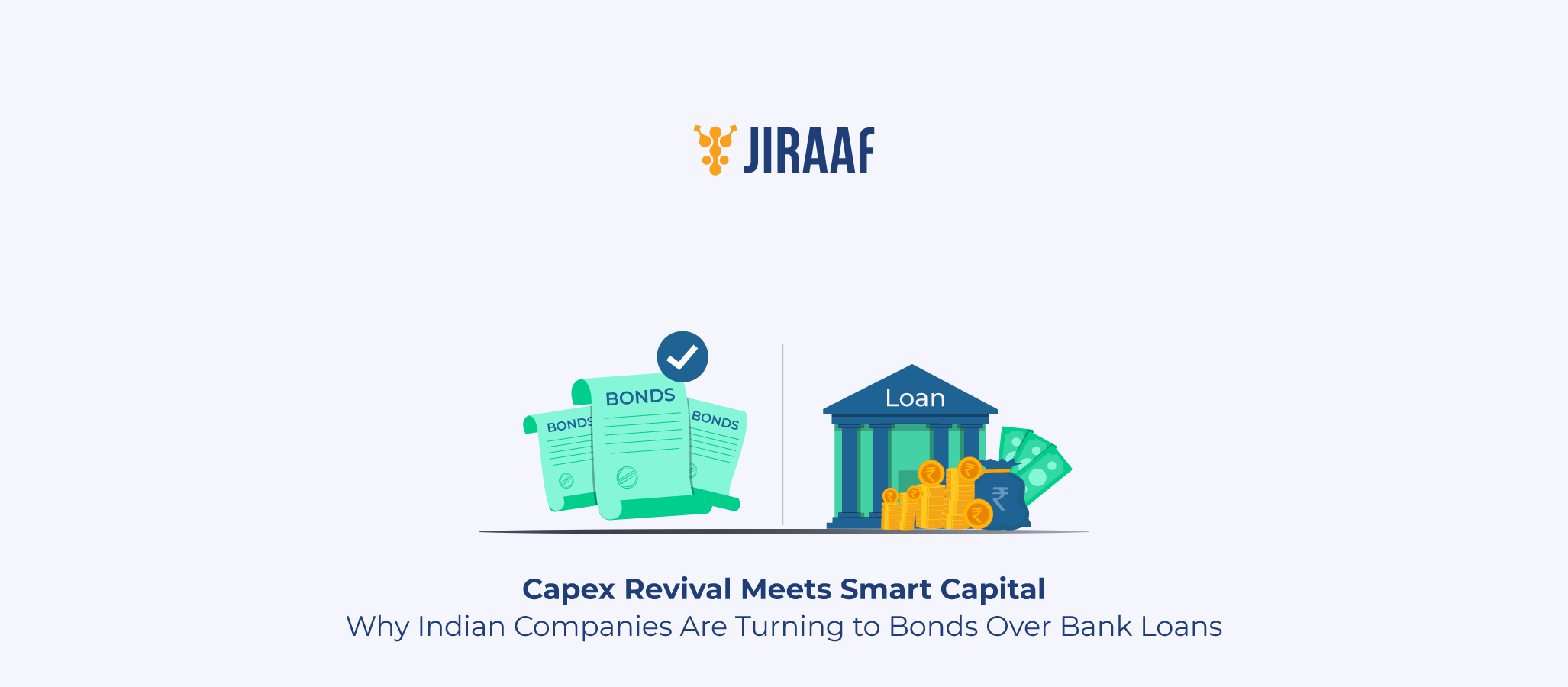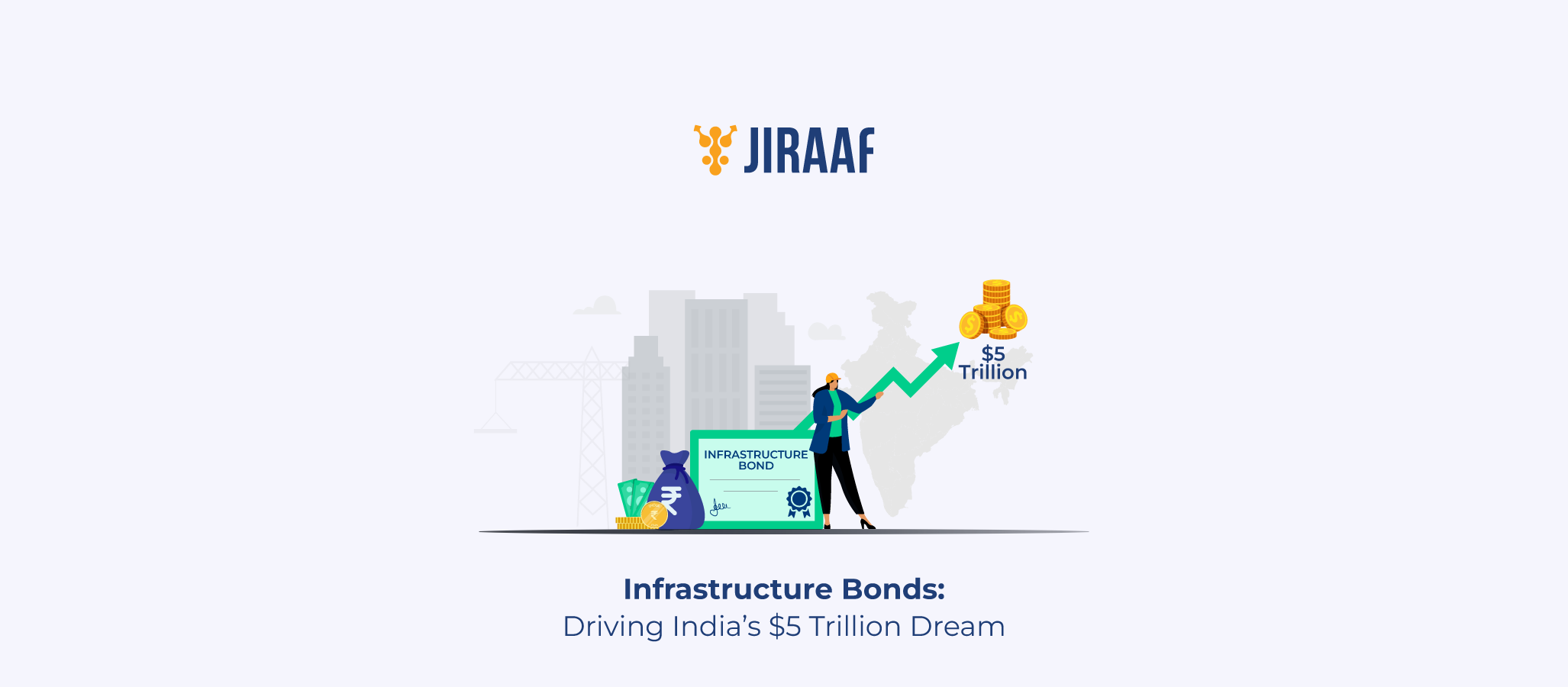In recent years bonds have gained some substantial popularity, in terms of demand as well as market share. As of March 2025, the Indian bond market stands at $2.7 trillion, making bonds a key source of debt funding for both the government and corporates. Further, with multiple bond platforms rising to democratize this asset class, now it’s become easier than ever for retail investors to access these instruments and include bonds in their overall investment portfolio strategy.
Investors are now served with bonds across various risk-return levels which requires them to critically evaluate these bond investment opportunities and select investments rationally that match their risk appetite and return expectations simultaneously. In this scenario, it is paramount for investors to understand the security structure of bonds into which they wish to invest.
What Is a Secured Bond?
Bonds are instruments through which companies or governments raises debt for operational purposes, and they can be either secure or unsecured in nature. Secured bonds are debt instruments backed by specific assets offered by the issuer as collateral. In essence, these assets serve as security for the lender, providing a layer of protection in the event the borrower is unable to meet its debt obligations.
The security offered against bonds could have fixed or floating charge on assets depending on various factors such as the industry in which the company operates in, purpose of loan, liquidity of assets, investors’ risk tolerance, etc. Fixed and floating security are explained below:
- Fixed charge: This is a charge over defined and identifiable assets. Examples include land, buildings, vehicles, machinery, etc.
- Floating charge: Floating charges are secured against dynamic asset pools, typically current assets like inventory or receivables, which are regularly replenished or substituted during the life of the bond or loan.
It is also important to carefully assess the nature of the assets being offered as collateral, as this plays a key role in determining the security’s reliability. The type of collateral typically varies based on the industry in which the issuer operates. For example, if the issuer is an NBFC, its loan receivables will form a major part of assets and therefore are offered as security on which investors have a floating charge. On the other hand, if the issuer is a real estate developer, then land and building may be offered as security on which investors have specific charge. It is important for investors to understand the industry they’re lending to and accept standard assets as collateral accordingly.
How Do Secured Bonds Work?
Conducting a thorough due diligence before investing in secured or unsecured bond is very important. However, despite all the important checks and analysis, due to certain unforeseen circumstances, there could arise a situation where the issuer of bonds may not be able to make repayments on time and in the worst cases, can even lead to defaults. How the situation is dealt with is different in case of secured vs. unsecured bonds.
In case of a secured or senior secured bond, the asset(s) offered as collateral or security by the borrower are liquidated in the event of default. The funds realized through the selling off these assets are then distributed to the holders of secured bonds. It is to be noted that despite providing assets as security, there could be cases where the realized value of assets is lesser than that overall outstanding principal (plus interest) which may lead to investors still losing some money. This is the reason why borrowers are generally expected to maintain a security cover of 1.1x or 1.2x of the principal outstanding to compensate for any shortcomings.
Secured vs. unsecured bonds have more to do with the priority of payments in case of default by the issuer. Secured bonds, in case of a default, are paid off first since these bonds are secured against identifiable assets whereas unsecured bonds have a lower priority in repayments considering they’d be paid off only out of the funds left after repaying operational expenses and secured bond holders. There are high chances, therefore, that unsecured bond holders may be repaid funds that are much lesser than their outstanding principal.
Key Features of Secured Bonds
While risks inherent to bond market are prevalent in case of secured bonds as well, there are certain key features that sets them apart:
- Backed by collateral: Secured bonds are backed by assets of the issuer that act as collateral. These assets can be liquidated in the event of default by the issuer.
- Lower default risk: In debt capital market, default or credit risk carries the highest weightage compared to all other risks involved. Securing the issuance through assets acts as a risk mitigant, allowing the investors to realise cash through sale of assets even in case of defaults.
- Priority in repayment: In the event of default, secured bonds are ranked higher than unsecured bonds in priority of repayment. This means, secured bond holders will be paid off before the unsecured bond holders in case of liquidation or restructuring of the company.
- Lower yields: Secured bonds, by virtue of being safer than unsecured bonds, offer comparatively lower yields.
Secured Bonds vs Unsecured Bonds
| Features | Secured Bonds | Unsecured Bonds |
| Security | Backed by collateral or assets | No security cover |
| Yield | Moderate yield | High yield |
| Credit risk | Low | High |
| Liquidity | Limited | Limited |
| Priority during liquidation | Higher priority | Lower priority |
| Issuer | Companies with substantial tangible or intangible assets | Well established and financially strong companies |
| Capital protection | Provides better capital protection | Limited capital protection |
Who Should Invest in Secured Bonds?
Secured bonds provide better scope for capital protection with reasonable yields. Here’s a look at who should consider investing in a secured bond:
- Risk-averse investors: If you seek capital protection along with moderately high yields, then secured bonds is something that you should surely consider. This will not only provide you with regular fixed income flow, but also with security of your principal.
- New investors: If you are new to bond investing, it is suggested that taking safer bets is better of to start with. Secured bonds can provide you safety with great returns till you gather some understanding of the bond market.
- Income focused investors: Secured bonds are not very speculative in nature. If you are an investor looking for steady returns and do not look at bonds with a trader’s mindset, these bonds can be of great help to create a monthly or quarterly income stream with very minimal risk.
- Retirees: Secured bonds is an ideal investment avenue for senior citizens as it can give them a regular cashflow along with capital protection.
- Investors seeking diversification: Secured bonds offer an excellent way to diversify across asset classes. A balanced portfolio might include 30% in fixed deposits, 40% in equities and mutual funds, and 30% in fixed-income instruments like secured bonds – combining stability, income, and growth.
Risks Involved in Secured Bonds
Although the security structure associated with secured bonds provides high degree of confidence to investors when it comes to capital protection, but it does not completely ward off all the risks involved at a macro level. Below are the risks involved in secured bonds:
- In economic downtime, there are chances that the value of assets collateralised might lose their market value, and realization through liquidation is likely to be much lesser than expected.
- In some cases, it may be difficult to sell the assets due to market conditions or decline in relevance of the assets.
- Due diligence is a critical component of the bond underwriting process; however, if the issuer’s intent is fraudulent, even a thorough due diligence process may not be sufficient to detect or prevent misconduct.
- Liquidity continues to be a challenge in the Indian bond market, and secured bonds too are not immune to this risk.
How to Invest in Secured Bonds in India?
Bonds, whether secured or unsecured, until a few years back were accessible only to institutions, HNIs and family offices. With multiple SEBI-regulated online bond platforms coming into play, even retail investors have now gained access to bonds.
Investors can easily register on these SEBI-regulated bond platforms, complete KYC and start adding secured bonds to their investment portfolio. These platforms are built to provide users with an easy, fast, secure and completely digital bond investment experience.
Online bond platforms provide a wide range of secured bond options across various industries, offering diverse risk-return profiles, yields, and tenures. Investors also benefit from dedicated customer support and relationship managers, ensuring personalized assistance throughout their investment journey. The ticket size on such platforms starts from just Rs. 1000 allowing investors to experience and understand the asset class before investing large sums.
Final Thoughts: Are Secured Bonds Right for You?
Choosing whether secured bonds are right for you or now boils down to what you expect from your investments. If you’re the type who values peace of mind, prefers capital protection, and is happy with steady, moderate returns—secured bonds could be your perfect match. That said, always assess the quality of the collateral, the issuer’s financial health, future prospects, and the overall creditworthiness before locking in your decision.
Discover fixed income investments with Jiraaf, a SEBI registered online bonds platform that educates and brings access to a wide array of bonds. Sign up today to explore diversified fixed income investment opportunities to support your goal-based wealth creation journey. Start investing!




